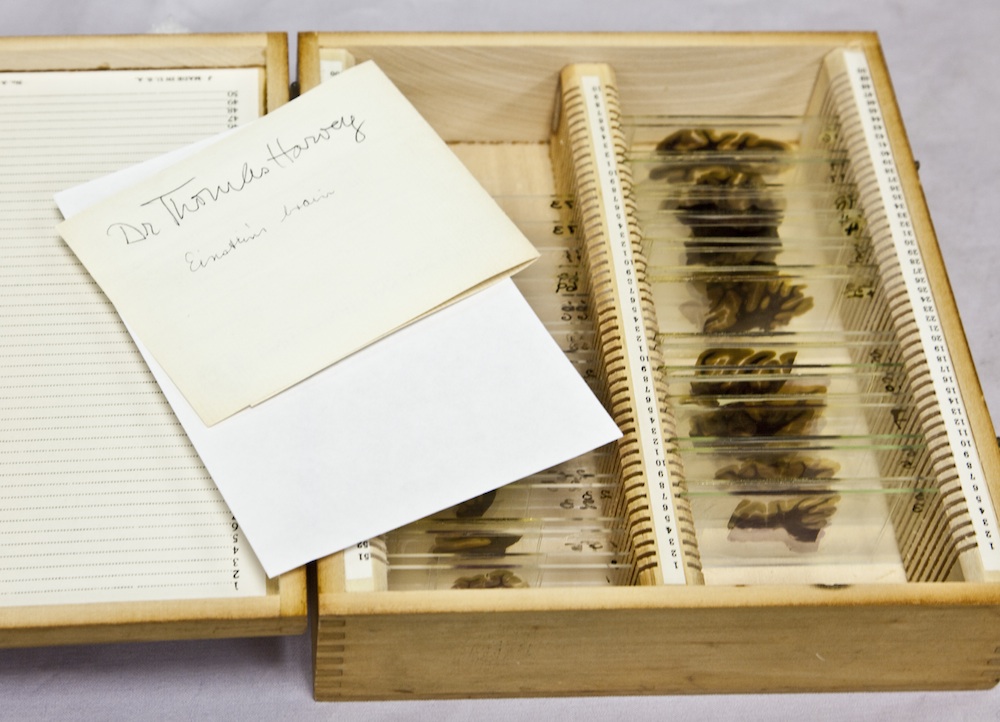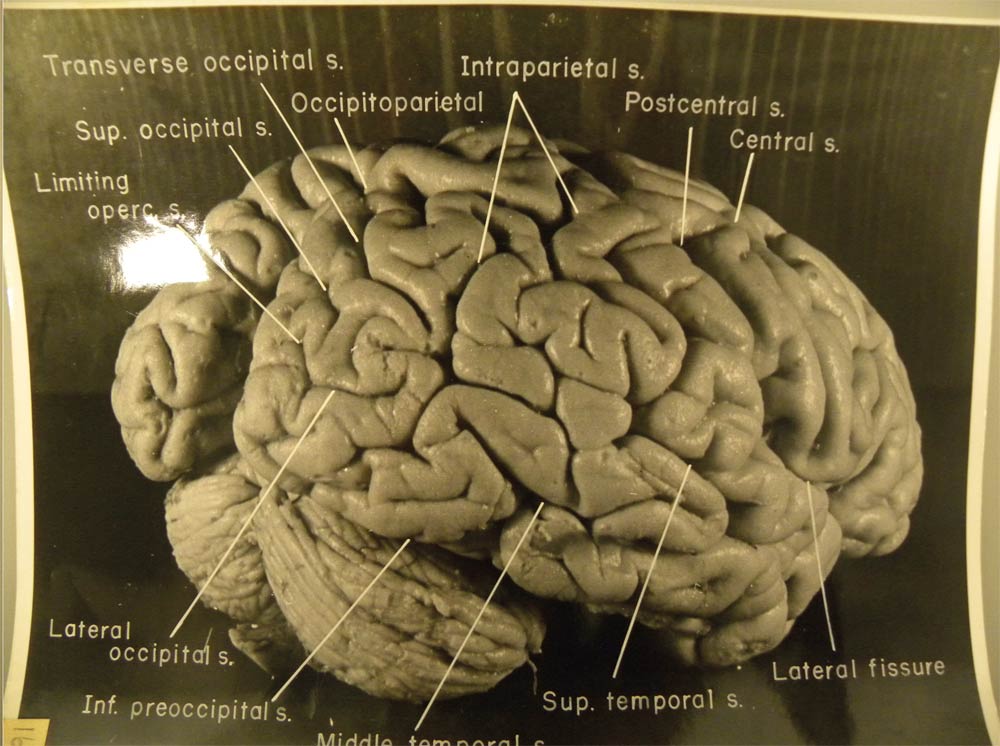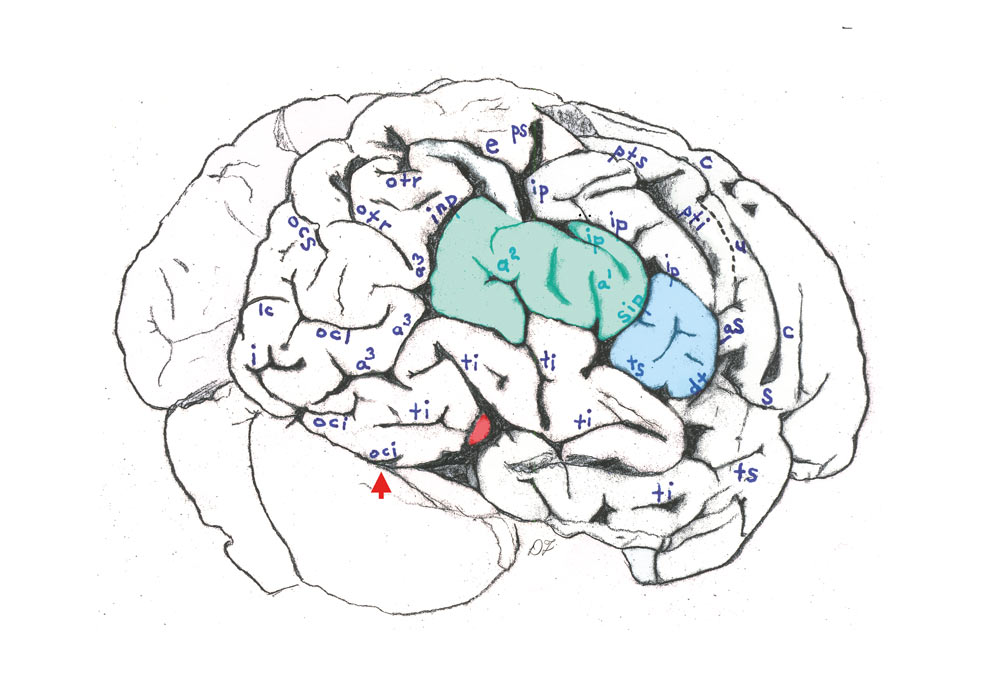Albert Einstein

When Albert Einstein died at age 76 in 1955 of an abdominal aneurysm, the pathologist who autopsied him, Thomas Harvey, kept his brain.
Slides of Einstein's Brain

Harvey sliced hundreds of thin sections of brain tissue and placed them on microscope slides, some of which he revealed in the years following his death
Extraordinary Gray Matter

However, Harvey kept secret 14 photographs of the brain, which were recently discovered.
More Folds, More Brain Power

A new analysis of those photos suggests Einstein had unusual levels of folding across his cerebral cortex, the gray matter responsible for conscious thought.
Beautiful Asymmetry

Einstein had asymmetric parietal lobes, which may have super-charged his spatial abilities. A 1999 study in the Lancet found that one brain region was completely absent in Einstein, allowing his parietal lobe to take up more space.
Naturally Brainy

The physicist had an extra fold in the frontal lobe, an area of the brain needed for sophisticated tasks such as abstract thought and prediction.
Abstract Genius

Here, an illustration by the the authors of the new paper shows the four frontal lobe ridges (labeled 1 through 4) as opposed to the three typically found in the human brain.
Get the world’s most fascinating discoveries delivered straight to your inbox.
A Brain Dissected

The red shaded region marks a spot where Harvey accidentally cut through Einstein's brain during the autopsy procedure.
Amazing Folds

Einstein was probably born with many of the brain differences that contributed to his genius.
Another View of Einstein's Brain

However, a lifetime thinking about physics likely also shaped his brain.

Tia is the editor-in-chief (premium) and was formerly managing editor and senior writer for Live Science. Her work has appeared in Scientific American, Wired.com, Science News and other outlets. She holds a master's degree in bioengineering from the University of Washington, a graduate certificate in science writing from UC Santa Cruz and a bachelor's degree in mechanical engineering from the University of Texas at Austin. Tia was part of a team at the Milwaukee Journal Sentinel that published the Empty Cradles series on preterm births, which won multiple awards, including the 2012 Casey Medal for Meritorious Journalism.


